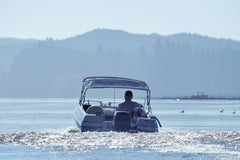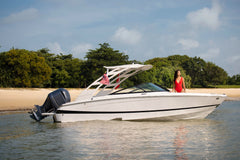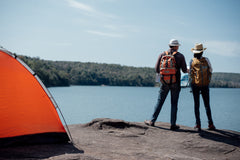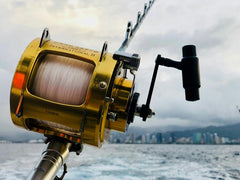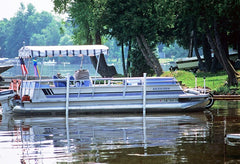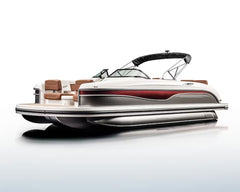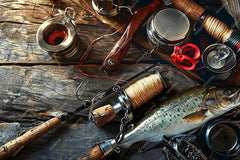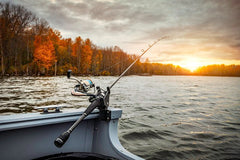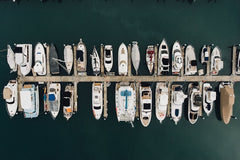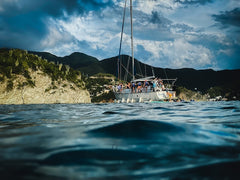Your Essential Pre-departure and Boating Safety Checklist
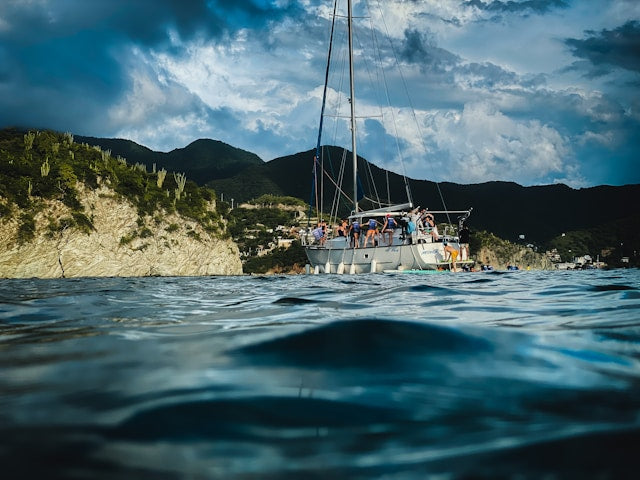
Sailing on a boat on a clear, sunny day, with the wind in your face and deep blue skies on the horizon, is an experience to cherish. It’s a blend of fun and adventure, making it a perfect recreational activity for individuals of all ages.
Whether you are on a fishing trip or simply coasting on the waters, a few safety practices can ensure that your ride is peaceful and enjoyable.
The following boating checklist covers some essential safety checks you should perform before every trip. We'll also share some often-missed safety tips to help you have a worry-free boating experience.
Boating Safety
Boating is fun and exciting. To ensure it's even more enjoyable, it’s a good idea to prepare a boating checklist and inspect your boat before you venture out.
Why is Boating Safety Important
Boating and fishing are recreational activities, but for the safety of both crew and passengers, it's vital to understand the components that impact your journey. Additionally, federal and state boating laws make it even more important to be aware of the various aspects involved.
Let’s delve into some of the essential pre-departure boating checklists.

Check Weather Forecast: Before you cast off, check the short-term and extended forecast for the routes you plan to take. Knowing the water conditions will enable you to predict and plan for events in advance so that you are well-prepared in case of an emergency.
Float Plan: File a float plan with your trusted contacts. Check the U.S Coast Guard’s Float Plan Template and download it for ease. Whether you're sailing off in a 10-foot kayak or a 90-foot sporting vessel, make sure to leave a float plan with a close contact.
Fuel: Follow safe fuelling practices. Ensure that you follow the 2/3rd rule. 1/3rd for the inbound journey, 1/3rd for the outbound and 1/3rd for reserve.
Check Blower Fans: These fans blow off the gasoline fumes that may have been trapped in enclosed spaces within the engine compartment. It’s always a good practice to run the fans before starting the engines.
Check Bilge Pump: The bilge is the lowest part of the boat’s interior. It’s where excess water is collected to be let off later. Excess water can be from rain, condensation, waves splashing over the sides, etc. A bilge pump removes the accumulated water. Ensure that the bilge pump is operational and there are no leaks.
Bilge pumps and blower fans are a part of boat safety equipment.
Life Jackets: Ensure you have enough U.S. Coast Guard-approved life jackets for the passengers and crew. Check the U.S. Coast Guard Life Jacket Regulations.
Ensure the jackets are appropriately sized. Ensure that the children on board are always wearing them. Life jackets should be stored in accessible areas and regularly inspected for wear and tear and damage. All passengers should be trained on the proper practices of wearing a life jacket correctly.
Sound Signal: U.S. Coast Guard safety rules mandate boats to carry a bell and whistle or a compressed air horn. These are to be used in low visibility conditions to produce a sound signal to alert nearby vessels.
Visual Signal: Flares are essential to produce a visual signal when conditions are dark. Be sure you carry enough flares.
Essential Boating Equipment
Now, let’s explore the often-overlooked boating essentials. Remember to include these items in your boat checklist.
Navigational Lights
These lights are present on the boat for an essential purpose. They communicate the vessel's position and journey direction. The colors of these lights vary based on their purpose and location on the boat. Their working condition must be checked before departing from the dock.
Anchor
A boat needs to be anchored to the lake or seabed whenever it is stationary. Additionally, certain weather conditions may not permit the boat to move, necessitating an anchor. The anchor and the associated machinery must be checked before setting out to sail.
VHF Radio
U.S. Coast Guard regulations require that boats and pontoons be equipped with a VHF (Very High Frequency) radio at all times. If you use a handheld device, ensure it has sufficient standby battery backup. For added safety, it's advisable to carry both a handheld and a stationary VHF radio. During emergencies, a mobile VHF radio can be particularly useful. These radios enable wireless communication with nearby vessels and can transmit mayday alerts. Familiarize yourself with the standard channels used.
Additionally, VHF radios can be employed to contact the Coast Guard in emergencies and to receive weather updates.
First Aid Kit or Boat Safety Kits
Check your boat carries a first aid kit containing a range of bandages and medications.

Tool Kit And Fire Extinguisher
Depending on the size of the vessel, fire extinguishers are essential. Check the fire extinguisher and familiarize yourself with its operation before you depart.
Besides a fire extinguisher, carry a tool kit to handle repairs so that you do not have to depend on pocket knives!
Emergency Fuel and Water
It's always a good idea to carry additional fuel and fresh water for consumption. These will come to your rescue during emergencies.
Tips for Sailing on The Water:
- Store a go-home waypoint on your GPS as you depart the dock.
- Know the waters you are navigating. Familiar yourself with the local charts and challenging areas on the route. It’s important to be aware of currents and tides.
- Boats above 40 feet in length must carry an up-to-date copy of the ISDOT ISCG International – Inland Navigational Rules book on board. Check the U.S. Coast Guard Navigation Rules.
- Avoid distracted driving. Always scan the horizon and look for other vessels or people performing recreational activities like scuba diving or swimming.
- While sailing, ensure no passengers are sitting on the gunwales and bow.
Tips for When You Return to The Dock:
- Moor the boat correctly using the bow, stern, and spring lines. Use fenders for protection.
- Operate the bilge pump and empty the tanks. Inspect the holding tank for leaks and loose plumbing connections.
- Connect the shore power cable for charging the onboard battery through the inverter.
- Switch off nonessential electrical loads.
- Close the float plan by calling the person to who you have provided the plan.
Conclusion
Following the essential boating checklist enhances the safety of your journey and makes your sailing experience memorable and fun.
When you are prepared, your chances of successfully countering contingencies increase significantly. Taking adequate safety precautions before departure and during sailing is also essential for complying with federal and state boating laws. In addition, it will ensure your peace of mind since you will be aligned with your insurer's requirements for safety.
If you are a boating or fishing enthusiast, explore the diverse range of Fishing Boat Accessories by Deep Blue Outdoors, a family-owned and operated business in East-central MN.
At Deep Blue Outdoors, you will find an excellent range of boating accessories for your needs. All our products are made in the USA.

